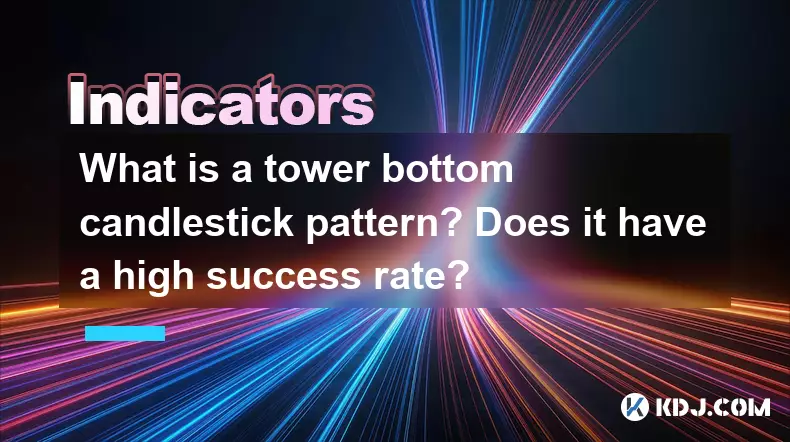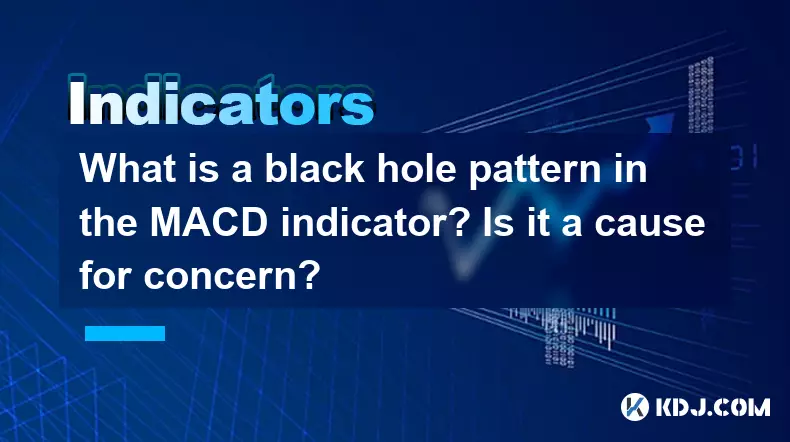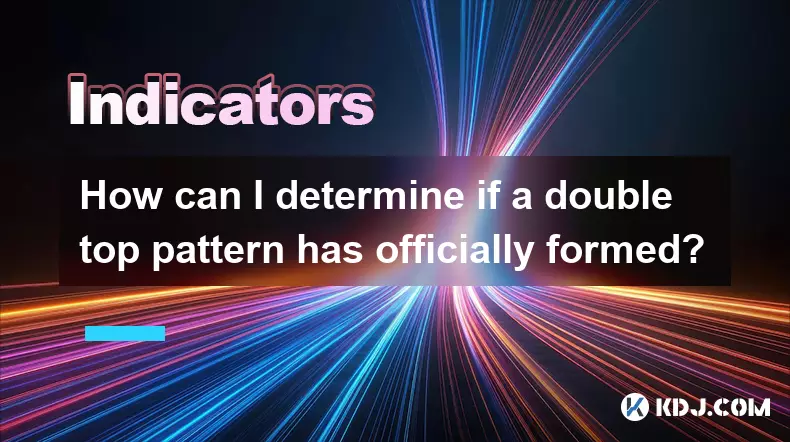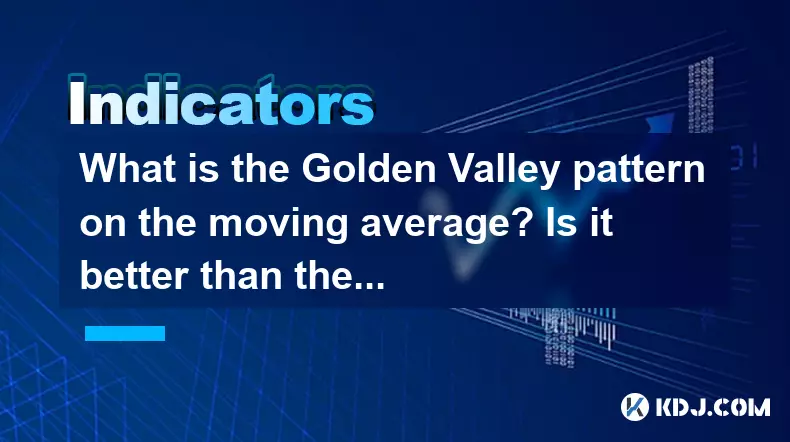-
 bitcoin
bitcoin $109547.008142 USD
0.04% -
 ethereum
ethereum $4011.838726 USD
-0.05% -
 tether
tether $1.000402 USD
-0.01% -
 xrp
xrp $2.798606 USD
0.88% -
 bnb
bnb $970.877944 USD
1.39% -
 solana
solana $202.237275 USD
-0.95% -
 usd-coin
usd-coin $0.999673 USD
0.00% -
 dogecoin
dogecoin $0.229294 USD
-1.15% -
 tron
tron $0.336370 USD
-0.45% -
 cardano
cardano $0.777260 USD
-1.66% -
 hyperliquid
hyperliquid $45.503019 USD
1.73% -
 ethena-usde
ethena-usde $1.000362 USD
0.01% -
 chainlink
chainlink $20.785303 USD
-1.10% -
 avalanche
avalanche $28.755822 USD
-0.11% -
 stellar
stellar $0.358303 USD
-0.48%
What to do if there are many false signals of Bollinger Bands? How to filter invalid signals?
Use RSI, MACD, and volume with Bollinger Bands to filter false signals; analyze multiple time frames and adjust settings for better trading decisions.
May 23, 2025 at 04:00 pm

The Bollinger Bands are a popular technical analysis tool used by many traders in the cryptocurrency market to identify potential buy and sell signals. However, like any other indicator, Bollinger Bands can generate false signals, leading to confusion and potential losses. This article will explore what to do if there are many false signals of Bollinger Bands and how to filter invalid signals effectively.
Understanding Bollinger Bands
Before diving into the solutions for handling false signals, it's essential to understand what Bollinger Bands are and how they work. Bollinger Bands consist of a middle band, which is typically a simple moving average (SMA), and two outer bands that are standard deviations away from the middle band. The standard setting is a 20-period SMA with the outer bands set at two standard deviations.
The primary use of Bollinger Bands is to identify overbought and oversold conditions in the market. When the price touches the upper band, it might indicate an overbought condition, suggesting a potential sell signal. Conversely, when the price touches the lower band, it might indicate an oversold condition, suggesting a potential buy signal. However, these signals can sometimes be misleading, leading to false breakouts and whipsaws.
Identifying False Signals
To effectively manage false signals, it's crucial to recognize when they occur. False signals with Bollinger Bands often happen when the price briefly touches the outer bands but quickly reverses direction without sustaining the move. This can happen due to market volatility, sudden news events, or simply because the market is in a range-bound state.
One common sign of a false signal is a quick reversal after touching the outer band. For instance, if the price touches the upper band and immediately falls back within the bands, it might be a false sell signal. Similarly, if the price touches the lower band and quickly rebounds, it might be a false buy signal.
Using Additional Indicators to Filter Signals
To filter out invalid signals, many traders combine Bollinger Bands with other technical indicators. This approach helps to confirm the signals generated by Bollinger Bands and reduces the likelihood of acting on false breakouts.
Relative Strength Index (RSI): The RSI is a momentum oscillator that measures the speed and change of price movements. It ranges from 0 to 100 and is typically used to identify overbought and oversold conditions. A common setting is an RSI of 14 periods. When the RSI is above 70, it indicates an overbought condition, and when it's below 30, it indicates an oversold condition. By using the RSI in conjunction with Bollinger Bands, traders can confirm whether the price touching the upper or lower band is a genuine signal. For example, if the price touches the upper band and the RSI is above 70, it's a stronger sell signal. If the price touches the lower band and the RSI is below 30, it's a stronger buy signal.
Moving Average Convergence Divergence (MACD): The MACD is another popular momentum indicator that helps traders identify trend direction and potential reversals. It consists of two lines: the MACD line and the signal line. When the MACD line crosses above the signal line, it's a bullish signal, and when it crosses below, it's a bearish signal. Combining the MACD with Bollinger Bands can provide additional confirmation for trade entries and exits. For instance, if the price touches the upper band and the MACD line crosses below the signal line, it confirms a potential sell signal. If the price touches the lower band and the MACD line crosses above the signal line, it confirms a potential buy signal.
Volume: Volume is a crucial factor in confirming price movements. High volume often accompanies significant price moves, suggesting that the move is more likely to be genuine. When using Bollinger Bands, paying attention to volume can help filter out false signals. If the price touches the upper or lower band with high volume, it's more likely to be a valid signal. Conversely, if the price touches the bands with low volume, it might be a false signal.
Implementing a Time Frame Analysis
Another effective way to filter out false signals is to analyze different time frames. Using multiple time frames can provide a more comprehensive view of the market and help confirm signals. For example, if you're trading on a 1-hour chart, you might want to check the 4-hour and daily charts to see if the signals align across different time frames.
Confirming Signals on Higher Time Frames: If a signal appears on a shorter time frame, such as the 1-hour chart, check if it's also present on a higher time frame, like the 4-hour or daily chart. If the signal is confirmed on multiple time frames, it's more likely to be valid. For instance, if the price touches the lower band on the 1-hour chart and also on the 4-hour chart, it's a stronger buy signal.
Avoiding Noise on Lower Time Frames: Lower time frames, such as the 5-minute or 15-minute charts, can be noisy and generate many false signals. By focusing on higher time frames, traders can avoid these false signals and make more informed trading decisions. For example, if you're considering a trade based on a signal on the 5-minute chart, check if it's also present on the 1-hour chart to ensure it's not just noise.
Setting Up Bollinger Bands Correctly
Properly setting up Bollinger Bands can also help reduce false signals. The default settings for Bollinger Bands are a 20-period SMA and two standard deviations. However, these settings might not be optimal for all market conditions or trading styles.
Adjusting the Period: The period of the SMA can be adjusted to suit different trading styles. A shorter period, such as 10 or 15, will make the bands more sensitive to price movements, while a longer period, such as 30 or 50, will make them less sensitive. Experimenting with different periods can help find the optimal setting for your trading strategy.
Adjusting the Standard Deviation: The standard deviation setting can also be adjusted to suit different market conditions. A higher standard deviation, such as 2.5 or 3, will make the bands wider, potentially reducing false signals in highly volatile markets. A lower standard deviation, such as 1.5 or 1, will make the bands narrower, potentially increasing false signals in less volatile markets. Finding the right balance is key to filtering out invalid signals.
Using Bollinger Band Width
The Bollinger Band Width is another useful tool for filtering out false signals. The Band Width is calculated as the difference between the upper and lower bands divided by the middle band. It provides a measure of market volatility.
Identifying Squeezes: A squeeze occurs when the Bollinger Bands narrow, indicating low volatility and a potential upcoming breakout. Traders can use this information to prepare for potential breakouts. If the price breaks out of the bands after a squeeze, it's more likely to be a valid signal. Conversely, if the price touches the bands during a period of high volatility without a preceding squeeze, it might be a false signal.
Confirming Breakouts: After a squeeze, if the price breaks out of the bands and the Band Width increases significantly, it's a stronger signal. Combining the Band Width with other indicators, such as the RSI or MACD, can provide further confirmation for the breakout.
Frequently Asked Questions
Q: Can Bollinger Bands be used effectively in all market conditions?A: Bollinger Bands can be used in various market conditions, but their effectiveness may vary. In highly volatile markets, adjusting the standard deviation to a higher value can help reduce false signals. In less volatile markets, a lower standard deviation might be more appropriate. It's essential to adapt the settings and combine Bollinger Bands with other indicators to suit different market conditions.
Q: How can I backtest Bollinger Bands to improve my trading strategy?A: Backtesting Bollinger Bands involves analyzing historical data to see how well the strategy would have performed. You can use trading platforms or software that allow backtesting, such as MetaTrader or TradingView. Set up the Bollinger Bands with your preferred settings and apply them to historical data. Monitor the signals generated and the resulting trades to see how well the strategy performs. Adjust the settings and combine with other indicators to optimize the strategy.
Q: Are there any common mistakes traders make when using Bollinger Bands?A: One common mistake is relying solely on Bollinger Bands without confirming signals with other indicators. This can lead to acting on false signals. Another mistake is not adjusting the settings to suit different market conditions, which can result in suboptimal performance. Additionally, some traders fail to consider the overall market context and trend, which is crucial for interpreting Bollinger Band signals correctly.
Q: Can Bollinger Bands be used for both short-term and long-term trading?A: Yes, Bollinger Bands can be used for both short-term and long-term trading. For short-term trading, you might use shorter time frames and adjust the settings to be more sensitive to price movements. For long-term trading, you can use longer time frames and adjust the settings to be less sensitive. The key is to adapt the settings and combine Bollinger Bands with other indicators to suit your trading style and time horizon.
Disclaimer:info@kdj.com
The information provided is not trading advice. kdj.com does not assume any responsibility for any investments made based on the information provided in this article. Cryptocurrencies are highly volatile and it is highly recommended that you invest with caution after thorough research!
If you believe that the content used on this website infringes your copyright, please contact us immediately (info@kdj.com) and we will delete it promptly.
- Ethereum, Bitcoin Dominance, and the Altcoin Rally: A New York Minute on Crypto
- 2025-09-28 12:25:15
- RLUSD, XRP, and Open Interest: Decoding the Dynamics
- 2025-09-28 12:25:15
- Crypto Meme Coins: Unveiling the 2025 Potential
- 2025-09-28 12:25:16
- Crypto's Comeback: Solana, Polygon, and the Hunt for the Next Moonshot
- 2025-09-28 12:25:16
- Stablecoins, Financial Transactions, and the Future World: A New York State of Mind
- 2025-09-28 12:30:12
- XRP, Competitor, PDP Climb: Decoding the Crypto Landscape in 2025
- 2025-09-28 12:30:12
Related knowledge

What is a tower bottom candlestick pattern? Does it have a high success rate?
Sep 22,2025 at 07:18am
Tower Bottom Candlestick Pattern Explained1. The tower bottom candlestick pattern is a reversal formation that typically appears at the end of a downt...

What is a black hole pattern in the MACD indicator? Is it a cause for concern?
Sep 21,2025 at 06:54pm
Bitcoin's Role in Decentralized Finance1. Bitcoin remains the cornerstone of decentralized finance, serving as a benchmark for value and security acro...

How can I use the psychological line (PSY) to determine market sentiment?
Sep 17,2025 at 02:19pm
Understanding the Psychological Line (PSY) in Cryptocurrency TradingThe Psychological Line, commonly referred to as PSY, is a momentum oscillator used...

How can I determine if a double top pattern has officially formed?
Sep 21,2025 at 03:18am
Understanding the Structure of a Double Top Pattern1. A double top pattern consists of two distinct peaks that reach approximately the same price leve...

What is the Golden Valley pattern on the moving average? Is it better than the Silver Valley pattern?
Sep 21,2025 at 02:54pm
Understanding the Golden Valley Pattern in Moving Averages1. The Golden Valley pattern is a technical formation observed in cryptocurrency price chart...

What does a death cross of the RSI in the strong zone (above 50) mean?
Sep 17,2025 at 10:54pm
Understanding the Death Cross in RSI Context1. The term 'death cross' is traditionally associated with moving averages, where a short-term average cro...

What is a tower bottom candlestick pattern? Does it have a high success rate?
Sep 22,2025 at 07:18am
Tower Bottom Candlestick Pattern Explained1. The tower bottom candlestick pattern is a reversal formation that typically appears at the end of a downt...

What is a black hole pattern in the MACD indicator? Is it a cause for concern?
Sep 21,2025 at 06:54pm
Bitcoin's Role in Decentralized Finance1. Bitcoin remains the cornerstone of decentralized finance, serving as a benchmark for value and security acro...

How can I use the psychological line (PSY) to determine market sentiment?
Sep 17,2025 at 02:19pm
Understanding the Psychological Line (PSY) in Cryptocurrency TradingThe Psychological Line, commonly referred to as PSY, is a momentum oscillator used...

How can I determine if a double top pattern has officially formed?
Sep 21,2025 at 03:18am
Understanding the Structure of a Double Top Pattern1. A double top pattern consists of two distinct peaks that reach approximately the same price leve...

What is the Golden Valley pattern on the moving average? Is it better than the Silver Valley pattern?
Sep 21,2025 at 02:54pm
Understanding the Golden Valley Pattern in Moving Averages1. The Golden Valley pattern is a technical formation observed in cryptocurrency price chart...

What does a death cross of the RSI in the strong zone (above 50) mean?
Sep 17,2025 at 10:54pm
Understanding the Death Cross in RSI Context1. The term 'death cross' is traditionally associated with moving averages, where a short-term average cro...
See all articles










































































